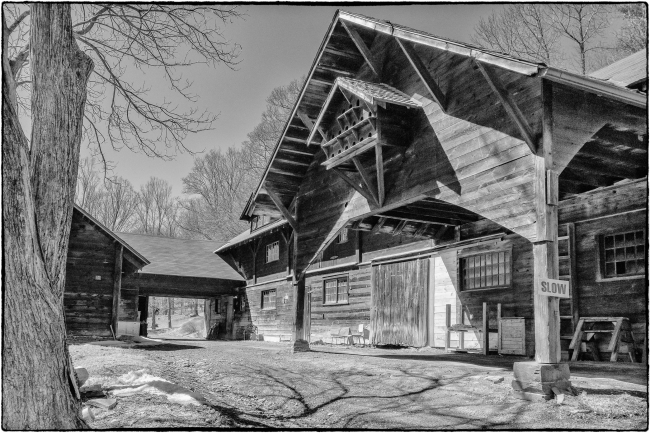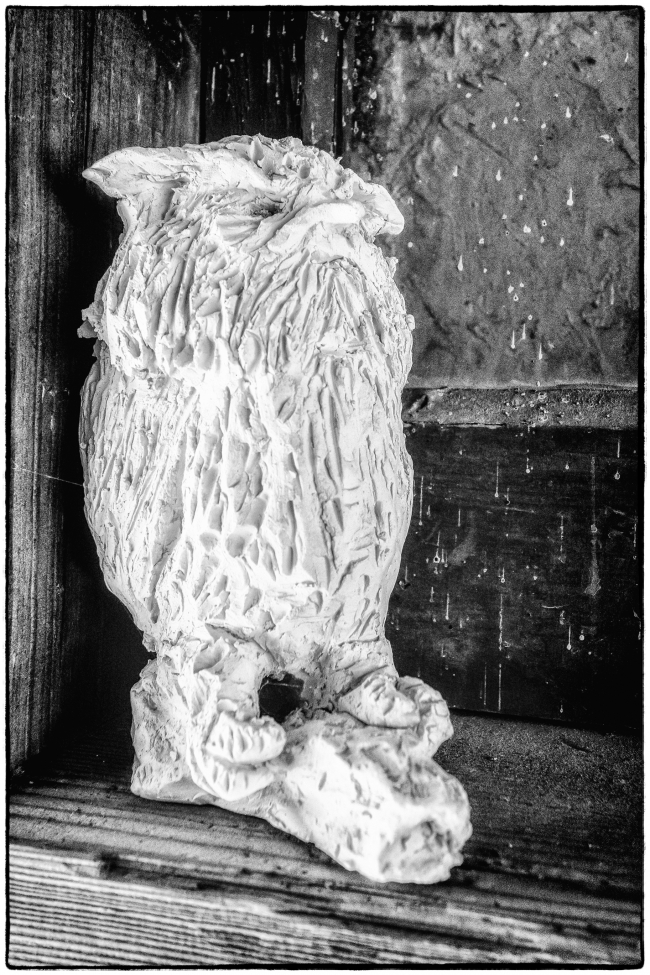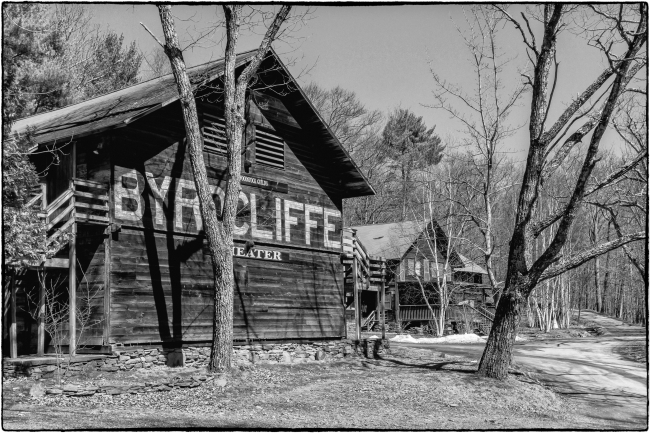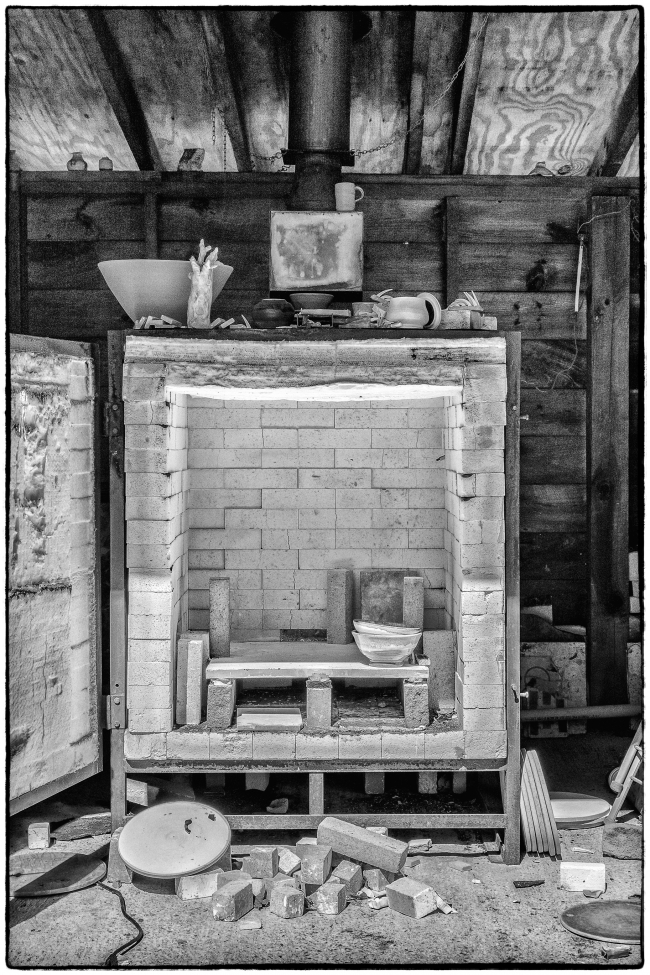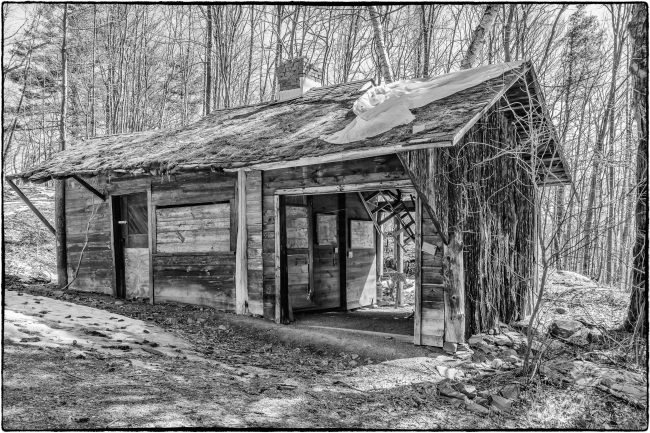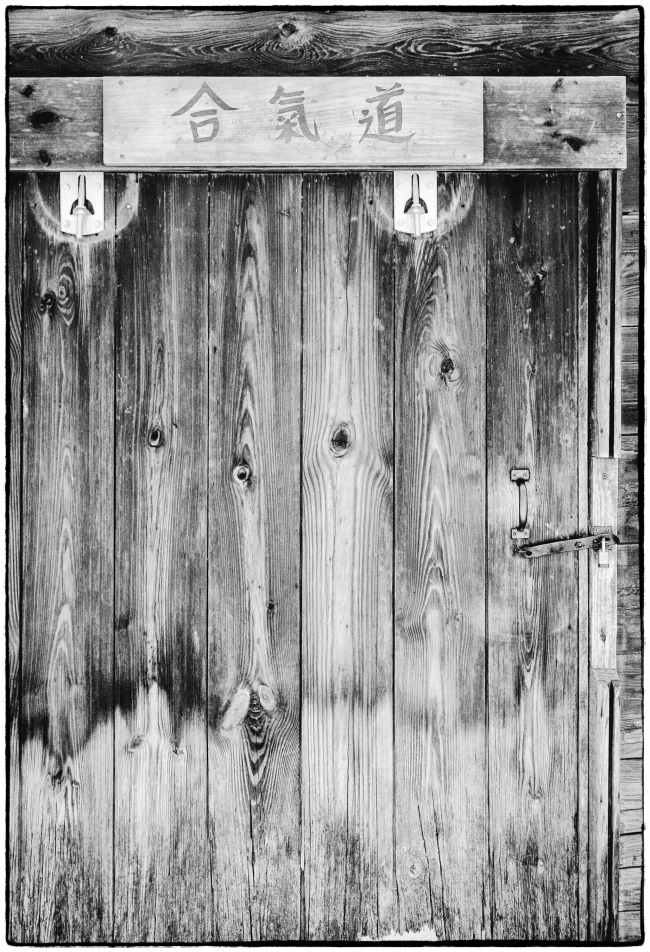Some time ago our family bought my wife a spa treatment at a place in Woodstock, NY and on a gorgeous sunny day we went there. I had a couple of hours to kill while she was undergoing her treatment and I’d noticed some signs pointing to “Brydcliffe Arts Colony” so I decided to check it out. Although it was a great day to walk around it wasn’t a great time for taking pictures: around mid-day with very strong, contrasty light. But you make do with whatever situation you have.
The picture at the top of the page is of “The Barns. The barns complex architecture has its roots in the vernacular barn buildings in England. They functioned as the center of the Byrdcliffe farming operations supplying milk, eggs, vegetables and grain to the colony until the death of Whitehead in 1929. Today the buildings are used for concerts, classes and events, and are the home of the Byrdcliff Akido Program and the Byrdcliffe Ceramics Studio.”
Unless otherwise noted all quotations are from the “Brydcliffe Arts Colony Self Guided Walking Tour Map”
According to the Woodstock Bryrdcliffe Guild web site:
Whitehead came to America and married Jane Byrd McCall in 1892. The daughter of a prominent Philadelphia family, she shared her husband’s vision of an artist-craftsmen community. After faltering starts in California and Oregon, Whitehead and two acquaintances – Hervey White, a writer, and Bolton Brown, an artist and educator, crisscrossed the country searching for the perfect site. Brown found the natural beauty of the Catskills and their proximity to New York City ideal for an art school and craft workshop. Whitehead agreed, enchanted by the “painterly landscape”.
Byrdcliffe, taken from the middle names of Ralph and Jane, was fully built and operating by the summer of 1903. It had a large studio for Bolton Brown’s and Birge Harrison’s art classes, metalworking shop, pottery studio, woodworking shop, dairy barn, guest houses, dormitory for students, library, and Whitehead’s own house, White Pines. Unlike the vernacular architecture specific to the Hudson Valley, with its tidy white clapboard farmhouses, Byrdcliffe buildings resemble low rambling Swiss chalets characterized by their dark stained indigenous pine siding, gentle sloping roofs with wide overhangs, and ribbons of windows painted Byrdcliffe blue.
…
Over the years, many notable visitors have been drawn to Byrdcliffe: feminist author Charlotte Perkins Gillman, New Dealer Harry Hopkins, educator John Dewey, naturalist John Burroughs, musicians Arnold Dolmetch, Leon Barzin and Bob Dylan, authors Will Durant and Thomas Mann, painters Milton and Sally Avery and George Bellows, photographer Eva Watson-Shutze, journalists Walter Weyl and Heywood Broun, poet Wallace Stevens, actress Helen Hayes, dancer Isadora Duncan, and entertainer Chevy Chase.
Owl on a window sill.
“Theater. Planned in 1902 by Bolton Brown to house the Byrdcliffe School of Art. The large studio room, with magnificent north light was used for painting classes, exhibitions, concerts, dance performances and social events. The west wing housed Ralph Whitehead’s 5,000 volume library. Today it is used as a theater for the performing arts”. and behind it “The Villetta. 1903 Boardinghouse for Byrdcliffe students. Operated as the French Camp for Children during World War II, in 1990 it became the home of the Byrdcliffe Artists-in-Residence Program. Behind the Villetta the old laundry, wood room and servants quarters have been converted into artist’s studios.
Pottery Kiln.
“The Old Kiln Shed. Built in 1914 by Ralph Whitehead as a pottery studio.”
Wooden door with oriental inscription.

